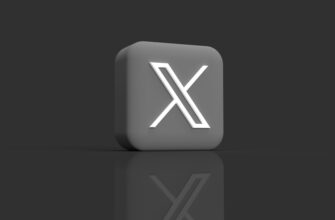- Unlock High-Yield Opportunities with Solana Lending on Yearn Finance
- Why Lend Solana on Yearn Finance?
- How Yearn Finance Achieves Top APY for Solana
- Step-by-Step: Lending SOL on Yearn for Maximum APY
- APY Comparison: Yearn vs. Competitors
- Critical Risks to Consider
- FAQ: Lending Solana on Yearn Finance
- 1. What’s the current highest APY for SOL on Yearn?
- 2. Are there withdrawal limits or fees?
- 3. How does Yearn achieve higher APY than direct lending?
- 4. Is my SOL insured against hacks?
- 5. Can I lend other cryptos on Yearn?
Unlock High-Yield Opportunities with Solana Lending on Yearn Finance
In the fast-paced world of decentralized finance (DeFi), earning passive income through crypto lending has become a cornerstone strategy. For Solana (SOL) holders seeking the highest possible APY, Yearn Finance emerges as a premier yield-optimization platform. By automating complex yield-farming strategies across multiple protocols, Yearn consistently delivers top-tier returns on SOL deposits—often outperforming traditional lending platforms. This guide explores how to leverage Yearn Finance to maximize your Solana earnings while navigating the mechanics, benefits, and risks of high-yield lending.
Why Lend Solana on Yearn Finance?
Yearn Finance revolutionizes passive income generation through its automated vault technology. Here’s why it’s ideal for SOL holders:
- Highest APY Potential: Yearn’s algorithms constantly seek the most profitable lending opportunities across DeFi, including protocols like Solend, Marinade, and Kamino.
- Automated Strategy Optimization: Vaults automatically compound rewards and shift funds between protocols to maintain peak yields.
- Gas Efficiency: Built on Solana’s low-fee network, transactions cost pennies compared to Ethereum alternatives.
- Security Focus: Rigorous smart contract audits and battle-tested strategies minimize exploit risks.
How Yearn Finance Achieves Top APY for Solana
Yearn’s vaults employ sophisticated tactics to maximize SOL yields:
- Multi-Protocol Aggregation: Funds are dynamically allocated across leading Solana lending platforms to capture the best rates.
- Auto-Compounding: Interest earnings are automatically reinvested to harness compound growth.
- Liquidity Mining Boost: Vaults tap into incentive programs like Solana ecosystem rewards for extra yield.
- Risk-Adjusted Allocation: Algorithms balance high-yield opportunities with collateral safety mechanisms.
Step-by-Step: Lending SOL on Yearn for Maximum APY
Follow this guide to start earning:
- Connect a Solana-compatible wallet (e.g., Phantom, Solflare) to Yearn Finance.
- Navigate to the Solana vaults section and select a SOL-specific strategy.
- Review APY details, fees (typically 2% management + 20% performance fee), and minimum deposit.
- Approve the transaction and deposit your SOL tokens.
- Monitor earnings via the dashboard; withdraw anytime (note: some strategies have lock-up periods).
APY Comparison: Yearn vs. Competitors
While rates fluctuate, Yearn frequently leads the market:
- Yearn Finance SOL Vaults: 8-15% APY (variable based on strategy)
- Solend: 3-7% APY
- Marinade Finance: 6-9% APY
- Centralized Exchanges: 1-5% APY
Note: Always verify real-time rates on Yearn’s dashboard as market conditions change.
Critical Risks to Consider
High APY comes with inherent DeFi risks:
- Smart Contract Vulnerabilities: Despite audits, exploits remain possible.
- Impermanent Loss: Applies if vaults use SOL in liquidity pools.
- SOL Volatility: Token value fluctuations can offset yield gains.
- Strategy Failures: Algorithmic errors or market shifts may temporarily reduce APY.
Mitigate risks by diversifying across vaults and never investing more than you can afford to lose.
FAQ: Lending Solana on Yearn Finance
1. What’s the current highest APY for SOL on Yearn?
APY fluctuates with market conditions, but Yearn’s leveraged SOL strategies often yield 12-18% during bullish periods. Check their real-time dashboard for updates.
2. Are there withdrawal limits or fees?
Most SOL vaults allow instant withdrawals, though complex strategies may impose brief unlock periods. Standard fees include a 0.5% deposit fee and 20% performance fee on profits.
3. How does Yearn achieve higher APY than direct lending?
Yearn amplifies returns by stacking rewards from lending, liquidity mining, and protocol incentives while automating capital reallocation between platforms.
4. Is my SOL insured against hacks?
No. Unlike centralized platforms, DeFi lacks FDIC-style insurance. Yearn’s vaults use audited contracts, but users bear ultimate responsibility.
5. Can I lend other cryptos on Yearn?
Yes! Yearn supports ETH, stablecoins (USDC, DAI), BTC wrappers, and other Solana-based assets like mSOL and jitoSOL for diversified yield farming.
Final Tip: Bookmark Yearn’s analytics pages like yearn.finance/vaults to track SOL APY trends and strategy performance before depositing.








